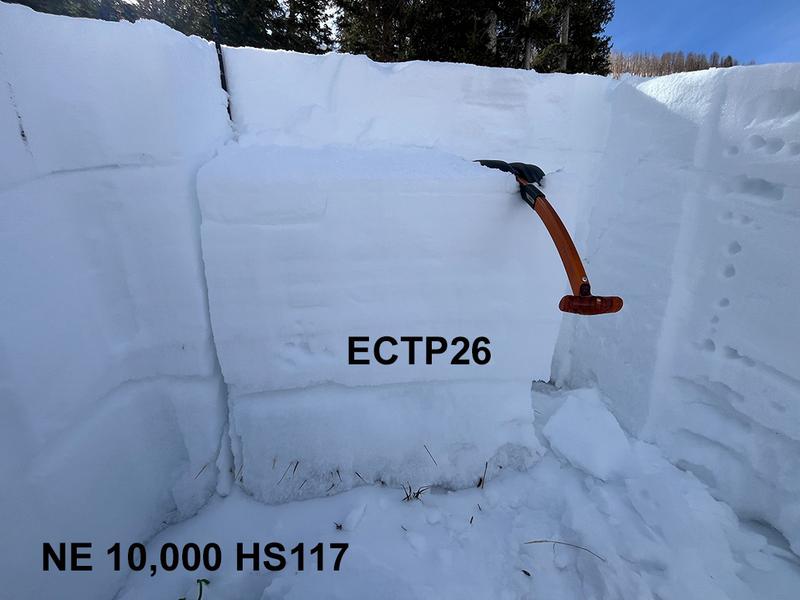It's no secret that we have a persistent weak layer of faceted snow at the base of the snowpack on W-N-E-SE aspects, and that this layer produced numerous deep avalanches during the stormy period between Feb 2-8. As the dust settles so to speak, human triggered avalanches failing on this weak layer are becoming less likely but the reuslts remain potentially deadly. In my travels yesterday I dug at lower elevations where the snowpack is shallow and continued to have reactive stability tests. Low elevations aren't the only places with a shallow snowpack and these are the areas where you are most likely to trigger an avalanche. You really need to do your homework before commiting to anytning steep. Dig, probe, avoid areas that are less than about 180-200 cms deep. Avoid steep, rocky areas, slope margins, thin convexities. These are all likely trigger points.
Here's how Dave is handling the current situation:
"I am continuing to evaluate the snow and terrain carefully. I am slowly biting off pieces of terrain. Nibbling at the edges before I go all in. I am probing the snowpack to be sure that I am skiing in areas with deep snow. I am ok with some overhead hazard, but I am generally keeping my slope angles low. I am choosing terrain that has gradual transitions and I am avoiding complex terrain with terrain traps and cliff bands. Remember that during moderate danger with a PWL, deep and dangerous human-triggered avalanches remain possible."
In the snowpit below, dug on a NE aspect at 10,000', I also found a reactive layer of surface hoar. I don't think this problem is widespread but it tells me that our snowpack is anything but cut and dried right now. We have basal facets, we have areas with mid and upper pack weak layers, but we lack outward signs of instability. This can give us a false sense of security, but it's not time to let our guard down.
Clearly defined layer of surface hoar.
Total snow depth or height of snow (HS) is 117 cms. Extended column test results of ECTP 24.
Extended column test results of ECTP26 failing on the basal facets. This is somewhat stubborn but it illustrates that deep avalanches remain possible, especially in shallow snowpack areas.













